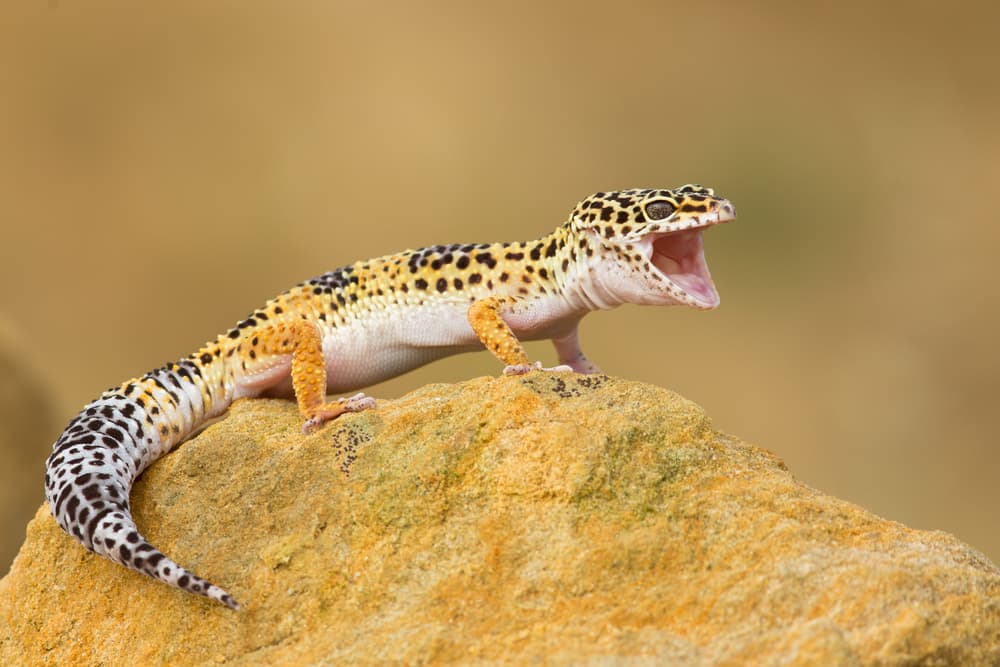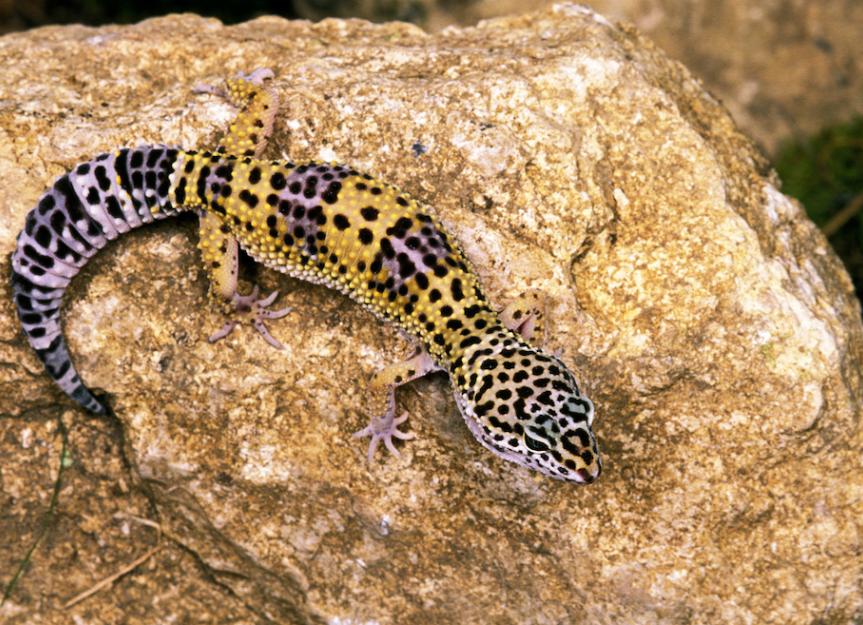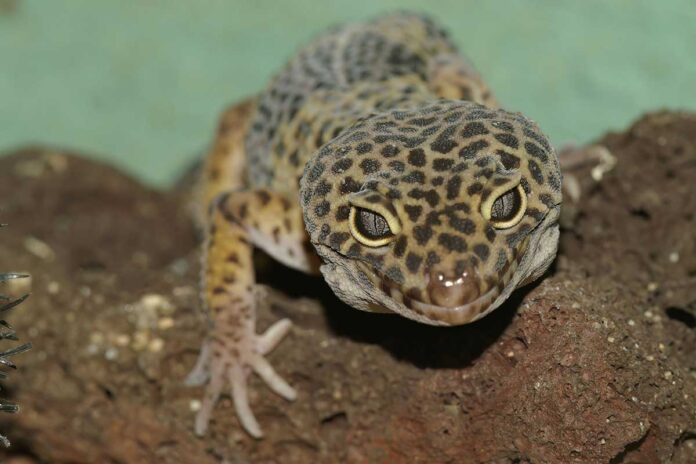Leopard geckos live for about 15 to 20 years. These fascinating creatures are popular as pets for their long lifespan and unique characteristics.
Leopard geckos are known for their distinctive spotted appearance and docile nature, making them a favorite among reptile enthusiasts. In addition to their longevity, these geckos are relatively low-maintenance, making them ideal for first-time reptile owners. Understanding their lifespan is crucial for providing proper care and ensuring a fulfilling companionship with these captivating creatures.
With the right environment and care, leopard geckos can live a healthy and happy life for many years.

Credit: www.jabberwockreptiles.com
Leopard Gecko Lifespan Basics
Understanding the lifespan of a leopard gecko is essential for any owner or enthusiast. By knowing how long these fascinating creatures live, you can ensure that you provide them with the best care and environment throughout their lives. In this section, we will explore the typical life expectancy of leopard geckos in captivity and the longevity of their wild counterparts.
Typical Life Expectancy In Captivity
Leopard geckos kept in captivity have the potential to live a long and fulfilling life when provided with proper care. On average, these geckos can live between 10 to 20 years. However, with the right husbandry practices and a healthy lifestyle, some leopard geckos have been known to live well into their 20s and even early 30s.
Creating a suitable habitat is crucial for promoting longevity in captive leopard geckos. These geckos require a well-maintained enclosure with proper heating, lighting, and humidity levels. Additionally, providing a balanced diet consisting of appropriate insect prey and calcium supplements is vital for their overall health and well-being.
Wild Leopard Gecko Longevity
While it is challenging to determine the exact lifespan of leopard geckos in the wild, studies suggest that they generally have a shorter lifespan compared to their captive counterparts. The harsh conditions, predation, and limited access to food and water sources in the wild can significantly impact their longevity.
Leopard geckos in their natural habitat typically have a lifespan ranging from 6 to 10 years. However, it is important to note that these estimates can vary depending on various factors such as environmental conditions, availability of resources, and genetic predispositions.
Although wild leopard geckos may have a shorter lifespan, it is important to appreciate their role in the ecosystem and the unique challenges they face in their natural environment.
Understanding the lifespan of leopard geckos allows us to appreciate the time we have with these incredible creatures. By providing them with proper care, we can ensure that they live long, healthy lives in captivity while respecting their natural lifespan in the wild.

Credit: dragonsdiet.com
Factors Influencing Lifespan
Leopard geckos’ lifespan is influenced by factors such as genetics, diet, and habitat. How Long Do Leopard Geckos Live? With proper care, they can live for 15-20 years in captivity. Providing a suitable environment, balanced nutrition, and regular veterinary check-ups can contribute to a longer and healthier life for these fascinating reptiles.
Importance Of Diet
Proper nutrition plays a crucial role in ensuring the long and healthy life of leopard geckos. Providing a well-balanced diet is essential for meeting their nutritional requirements and preventing common dietary mistakes. By understanding what leopard geckos need in their diet, you can help them thrive and enjoy a longer lifespan.
Nutritional Requirements
Leopard geckos are insectivores, which means their diet primarily consists of insects. In the wild, they feed on a variety of small invertebrates, such as crickets, mealworms, and waxworms. When kept in captivity, it’s important to replicate their natural diet as closely as possible to ensure they receive all the necessary nutrients.
| Nutrient | Importance | Food Sources |
|---|---|---|
| Protein | Essential for growth, repair, and overall health | Crickets, mealworms, dubia roaches |
| Calcium | Required for strong bones and proper muscle function | Calcium-dusted insects, calcium supplements |
| Vitamin D3 | Aids in calcium absorption and metabolism | UVB lighting, calcium supplements |
| Vitamins and Minerals | Support overall health and immune function | Gut-loaded insects, commercial reptile multivitamin supplements |
Providing a varied diet is essential to ensure leopard geckos receive all the necessary nutrients. By offering a combination of different insects and occasionally supplementing their diet with calcium and multivitamin supplements, you can help meet their nutritional needs.
Common Dietary Mistakes
While it’s important to provide a balanced diet, there are some common mistakes that leopard gecko owners should avoid:
- Feeding only one type of insect: Restricting their diet to a single type of insect can lead to nutritional deficiencies.
- Overfeeding: Leopard geckos have a tendency to overeat, which can lead to obesity and health issues. It’s important to feed them appropriate portion sizes.
- Not gut-loading insects: Gut-loading involves feeding the insects a nutritious diet before offering them to your gecko. This ensures that the insects themselves are rich in nutrients.
- Not providing calcium and vitamin supplements: Even with a varied diet, leopard geckos may require additional supplementation to meet their nutritional needs.
By avoiding these common dietary mistakes and providing a balanced and varied diet, you can help ensure the longevity and well-being of your leopard gecko.
Habitat Setup And Maintenance
Creating an optimal habitat for your leopard gecko is crucial for ensuring their longevity and overall well-being. The right terrarium conditions and regular cleaning routines are key aspects of habitat setup and maintenance that contribute to the health and happiness of your gecko. Let’s explore these factors in detail:
Optimal Terrarium Conditions
Providing your leopard gecko with the optimal terrarium conditions is essential for their survival. Here are some factors to consider:
- Temperature: Maintain a temperature gradient within the terrarium with a warm side ranging between 88-92°F (31-33°C) and a cooler side around 75-80°F (24-27°C). This allows the gecko to regulate its body temperature effectively.
- Lighting: Leopard geckos are nocturnal creatures, so they require a light source that mimics their natural environment. Use a low-wattage heat lamp or an under-tank heating pad to provide a warm basking spot.
- Substrate: Choose a suitable substrate that allows for easy burrowing and provides traction for your gecko. Options such as reptile carpet, paper towels, or slate tiles are recommended to prevent impaction.
- Hideouts: Place multiple hideouts within the terrarium to provide your gecko with a sense of security. These hideouts can be in the form of natural-looking caves or commercial reptile hides.
- Humidity: Maintain a moderate humidity level of around 40-50% to prevent dehydration. This can be achieved by misting the terrarium with water or using a reptile humidifier.
Regular Cleaning Routines
Implementing regular cleaning routines is vital to keep your leopard gecko’s habitat clean and free from harmful bacteria. Here are some important steps to follow:
- Remove waste: Clean the terrarium daily by removing any feces or uneaten food. This helps maintain a hygienic environment and prevents the spread of diseases.
- Spot cleaning: Regularly inspect the terrarium for any soiled areas and promptly clean them. Use a reptile-safe disinfectant to sanitize the affected spots.
- Deep cleaning: Perform a thorough deep cleaning of the entire terrarium at least once a month. This involves removing all decorations, disinfecting the enclosure, and replacing the substrate.
- Water bowl hygiene: Clean and refill the water bowl daily to ensure a constant supply of fresh water. This helps prevent the growth of bacteria and maintains the gecko’s hydration.
By adhering to these optimal terrarium conditions and regular cleaning routines, you can create a safe and comfortable habitat for your leopard gecko, promoting their longevity and overall well-being.
Healthcare For Longevity
Preventative Measures
Providing a suitable environment is crucial. Keep the temperature range between 75-85°F during the day and around 70°F at night. Ensure the humidity level is between 20-40%. Use a substrate that won’t cause impaction if ingested. Clean the enclosure regularly to prevent bacterial growth.
Common Health Issues
Obesity can lead to various health problems. Ensure a balanced diet and avoid overfeeding. Metabolic bone disease is often caused by calcium and vitamin D3 deficiencies. Provide a calcium supplement and UVB lighting. Shedding issues can occur if the humidity levels are not optimal. Provide a moist hide to help with shedding.
Impact Of Breeding On Lifespan
When it comes to the lifespan of leopard geckos, breeding can have a significant impact. Understanding the effects of breeding on their lifespan is crucial for responsible pet ownership.
Breeding Frequency
The frequency of breeding can directly impact the lifespan of leopard geckos. Overbreeding can lead to physical and emotional stress for these reptiles, resulting in decreased longevity. It’s important to limit breeding to ensure the well-being and longevity of the geckos.
Post-breeding Care
After breeding, providing proper post-breeding care is essential to ensure the health and longevity of leopard geckos. This includes monitoring their diet, maintaining ideal temperature and humidity levels, and providing a stress-free environment. Adequate care post-breeding can help minimize the negative impact on their lifespan.
Signs Of Aging In Leopard Geckos
Leopard geckos typically live for 6 to 10 years in the wild, but they can live up to 20 years in captivity. Signs of aging in leopard geckos include decreased activity, loss of appetite, and changes in skin texture and color.
It’s important to provide proper care and a suitable environment to ensure their longevity.
Physical Changes
Leopard geckos display physical changes as they age:
- Loss of skin elasticity
- Fading of skin color
- Decrease in body weight
Behavioral Adjustments
Behavioral adjustments in aging leopard geckos include:
- Reduced activity levels
- Decreased appetite
- Preference for warmer areas
Enhancing Quality Of Life
Providing a suitable environment and care for your leopard gecko can significantly impact its lifespan. Enhancing the quality of life involves implementing enrichment activities and stress reduction techniques.
Enrichment Activities
- Hideouts: Offer various hiding spots for security.
- Climbing Structures: Add branches for climbing exercise.
- Toys: Include safe toys for mental stimulation.
Stress Reduction Techniques
- Proper Lighting: Maintain a day-night cycle with UVB lighting.
- Temperature Control: Ensure optimal temperature gradients.
- Handling: Limit handling to minimize stress levels.
The Role Of Veterinary Care
When it comes to the longevity of leopard geckos, veterinary care plays a crucial role in ensuring their well-being and lifespan.
Routine Check-ups
Regular veterinary check-ups are essential for monitoring the health of leopard geckos.
Emergency Interventions
In cases of urgent medical issues, prompt veterinary care can be life-saving for leopard geckos.
Myths Vs. Facts About Leopard Gecko Lifespan
Leopard gecko lifespan is a topic surrounded by myths and facts. These fascinating reptiles can live up to 20 years, contrary to common misconceptions. Understanding the truth behind their lifespan is crucial for proper care and keeping them as pets.
Debunking Common Myths
Leopard geckos are believed to live for a very long time.
However, there are myths surrounding their lifespan.
Let’s debunk these common misconceptions:
- Myth: Leopard geckos can live for 30+ years.
- Fact: Their average lifespan is 6-10 years.
- Myth: They can live for decades in captivity.
- Fact: Proper care can extend their lifespan, but not significantly.
Understanding Lifespan Limitations
Leopard geckos have specific lifespan limitations to consider.
Factors affecting their longevity include:
- Genetics: Some may live slightly longer based on genetic factors.
- Environment: Proper lighting, temperature, and diet are crucial.
- Healthcare: Regular vet check-ups can impact their lifespan.

Credit: www.petmd.com
Frequently Asked Questions
How Long Do Leopard Geckos Live?
Leopard geckos can live up to 20 years or more in captivity with proper care and nutrition.
What Factors Affect The Lifespan Of Leopard Geckos?
The lifespan of leopard geckos can be affected by factors like genetics, diet, environment, and overall health.
How Can I Ensure A Long Lifespan For My Leopard Gecko?
To ensure a long lifespan for your leopard gecko, provide a proper diet, maintain a suitable environment, and schedule regular check-ups with a veterinarian.
Do Male And Female Leopard Geckos Have Different Lifespans?
There is no significant difference in lifespan between male and female leopard geckos if they are given proper care and nutrition.
Conclusion
Leopard geckos are fascinating creatures that can live for a long time when taken care of properly. With a lifespan of up to 20 years, these lizards make great pets for those who are willing to commit to their care.
By providing a suitable environment, a balanced diet, and regular health checkups, you can ensure your leopard gecko lives a healthy and happy life. Remember, investing time and effort into your pet’s wellbeing will pay off in the long run.


